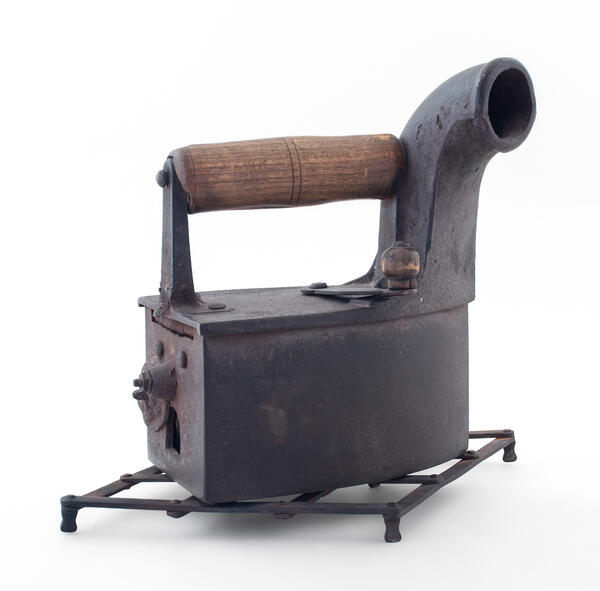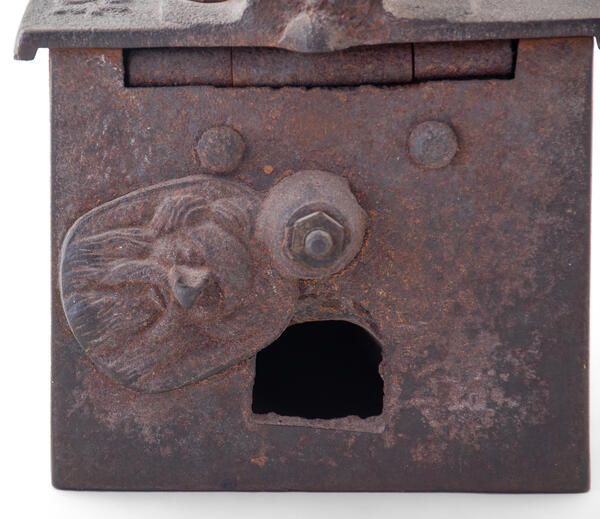The museum’s collection includes a cast-iron iron with a wooden handle and a heat pipe.
The body of the iron is hollow. On top of it there is a lid on a loop and with a latch, at the end of which a wooden knob is built in. A wooden handle is fixed on the lid between the metal bracket and the pipe, which are cast together.
There is an arch-shaped blower in the back, which is closed with a special covering plate. This piece looks like the face of a man with a long nose. Inside the iron there is a grate (cast iron grid for air passage), which has the shape of a truncated semicone.
In ancient times, people used mammoth bones, which were carefully polished, to smooth the skins. In ancient Greece, heated and smooth on one side pieces of granite were used for fabric processing. In China, handles have been added to such devices for ease of use.
By the 16th century, wedge-shaped irons appeared. Together with the handles that were soldered to them, they could weigh up to 10 kilograms. At the same time, the so-called “gavki” were also used — mugs and glass bubbles that were filled with boiling water.
By the middle of the 19th century, two types of irons were used in Russia — tailor’s and steam ones. The first type was a direct descendant of the medieval predecessors. It was made of solid metal and heated on coals. The second type of iron — a steam one — was more convenient to use and was also safer, because, unlike a tailor’s iron, its handle was wooden and did not heat up.
The Lev Tolstoy iron model is a rare type of steam irons that were produced by the Kovno factory of the Schmidt brothers after the excommunication of Leo Nikolaevich Tolstoy from the church. In the ruling of the Holy Synod of February 24, 1901, the famous writer was accused of “overthrowing all the dogmas of the Orthodox Church and the very essence of the Christian faith” — with reference to the contents of his writings and letters. In this regard, public opinion was divided in half: some supported him, others supported representatives of the clergy.
The Schmidt brothers factory also reacted to the
writer’s anti-clerical statements. It began to use a portrait of Tolstoy on a
charcoal iron. In order to open the flap, the hostess had to “pull the writer’s
nose”. Such irons were released in a limited edition and are considered a real
rarity today.






